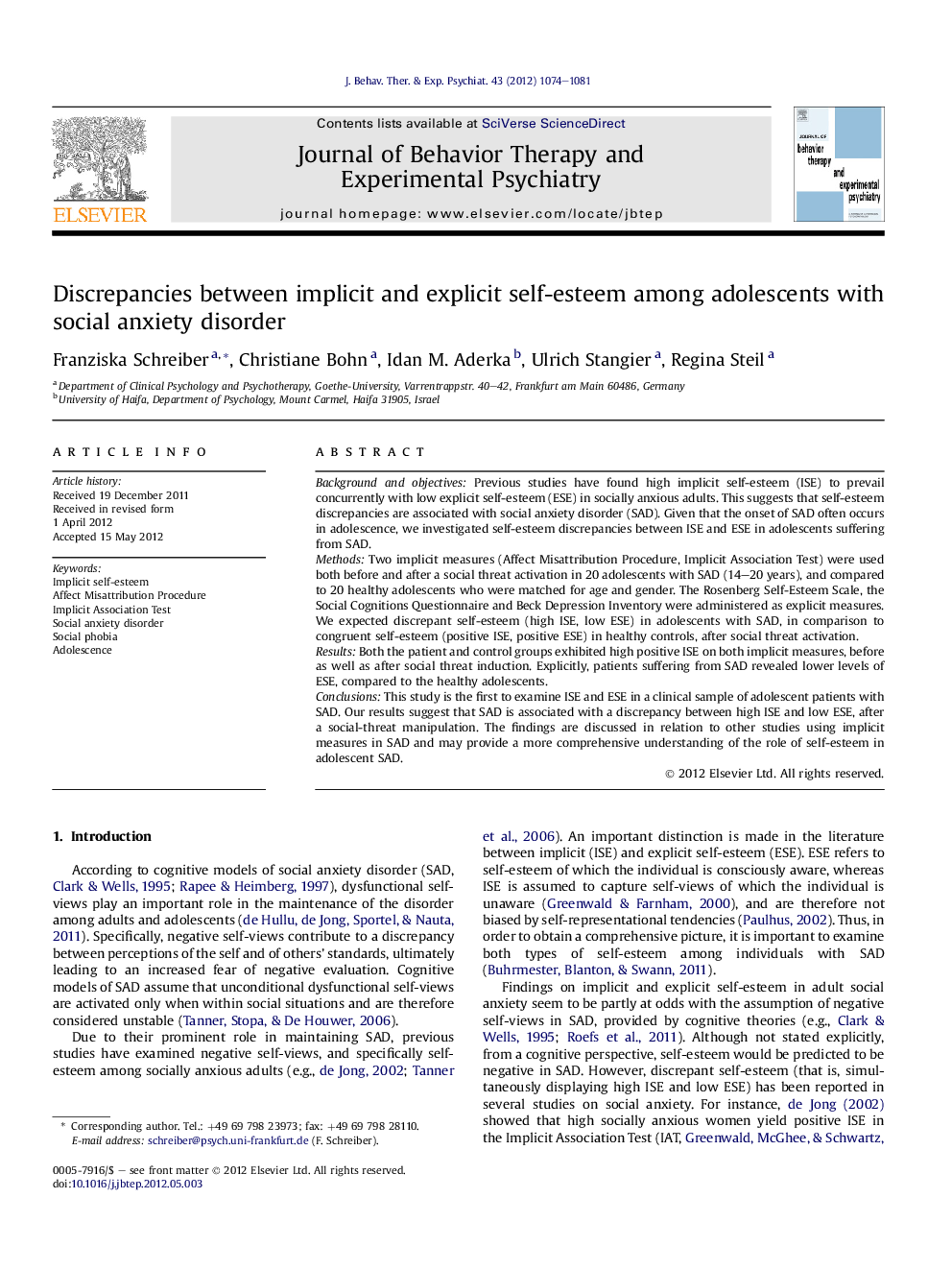| کد مقاله | کد نشریه | سال انتشار | مقاله انگلیسی | نسخه تمام متن |
|---|---|---|---|---|
| 910454 | 917463 | 2012 | 8 صفحه PDF | دانلود رایگان |

Background and objectivesPrevious studies have found high implicit self-esteem (ISE) to prevail concurrently with low explicit self-esteem (ESE) in socially anxious adults. This suggests that self-esteem discrepancies are associated with social anxiety disorder (SAD). Given that the onset of SAD often occurs in adolescence, we investigated self-esteem discrepancies between ISE and ESE in adolescents suffering from SAD.MethodsTwo implicit measures (Affect Misattribution Procedure, Implicit Association Test) were used both before and after a social threat activation in 20 adolescents with SAD (14–20 years), and compared to 20 healthy adolescents who were matched for age and gender. The Rosenberg Self-Esteem Scale, the Social Cognitions Questionnaire and Beck Depression Inventory were administered as explicit measures. We expected discrepant self-esteem (high ISE, low ESE) in adolescents with SAD, in comparison to congruent self-esteem (positive ISE, positive ESE) in healthy controls, after social threat activation.ResultsBoth the patient and control groups exhibited high positive ISE on both implicit measures, before as well as after social threat induction. Explicitly, patients suffering from SAD revealed lower levels of ESE, compared to the healthy adolescents.ConclusionsThis study is the first to examine ISE and ESE in a clinical sample of adolescent patients with SAD. Our results suggest that SAD is associated with a discrepancy between high ISE and low ESE, after a social-threat manipulation. The findings are discussed in relation to other studies using implicit measures in SAD and may provide a more comprehensive understanding of the role of self-esteem in adolescent SAD.
► Inclusion of a clinical adolescent sample with social anxiety disorder (SAD) and a matched healthy adolescent control group.
► Adolescents with SAD showed discrepant (high implicit, low explicit) self-esteem after social threat activation.
► Healthy adolescents endorsed a congruent self-esteem pattern after social threat activation.
► Our results suggest that SAD is associated with a discrepancy in self-esteem in adolescence.
► Using two implicit measures (Affect Misattribution Procedure, IAT) corroborates the validity of our findings.
Journal: Journal of Behavior Therapy and Experimental Psychiatry - Volume 43, Issue 4, December 2012, Pages 1074–1081